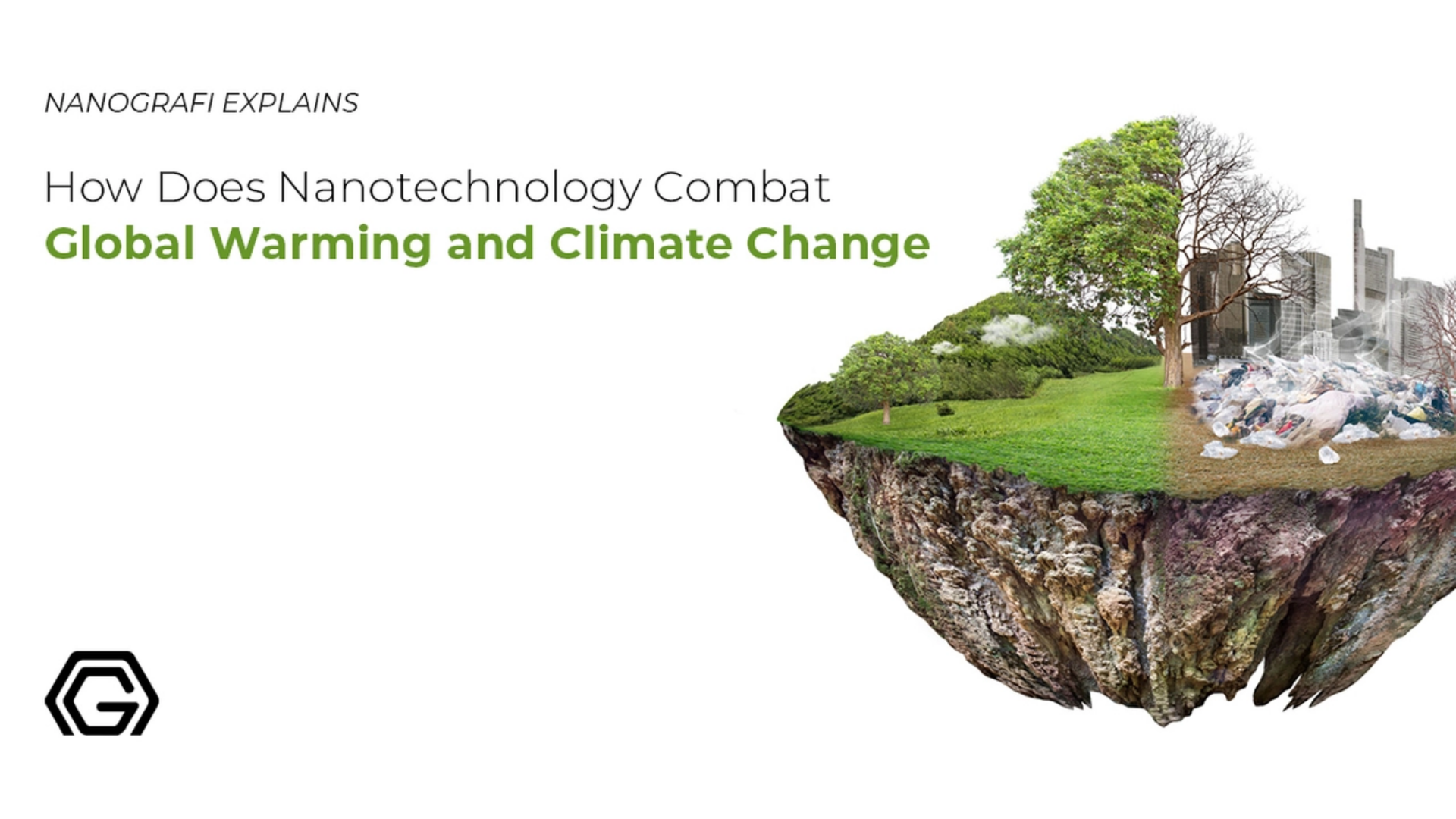Future of Solar Cells with Nanotechnology Solar Energy
The source of solar energy is the fusion of hydrogen atoms in the core of the Sun at the temperature of about 160,000,000°C and the pressure of about 250 billion atmospheres.
At this extremely high temperature and pressure, two atoms of hydrogen fuse to generate helium with the consecutive burst of energy in the form of heat and light.
Introduction
In order to understand the amount of energy generated by the sun, it is helpful to compare it to the energy generation by the biggest dams in the world. The Three Gorges Dam in Hubei China has the capacity to generate 10 million megawatts of power in the course of a year, while the Sun can generate 385 billion billion megawatts of power in just one second. Nevertheless, a very small amount of the energy reaches to Earth and an ignorable amount of that received energy is converted to forms of energy available on Earth. Therefore, science and Technology are expected define more efficient place for hardness best significant on the Mount of energy which is lost in a second on Earth.
Contribution of Nanotechnology to Solar Cell Technology
Solar energy is the heat from the Sun and its radiant light that could be harnessed using a series of available technologies such as photovoltaic cells, solar architecture, solar heating, solar thermal energy, artificial photosynthesis and molten salt power plants. In fact, the Sun is an essential source for sustainable energy technologies that are characterized as active solar or passive solar depending on how the solar energy is captured, distributed or converted it into the solar power. Photovoltaic systems, solar water heating and concentrated solar power are categorized among active solar techniques. On the other hand, passive solar techniques comprise buildings with orientation to the Sun to capture as much energy as possible and the use of materials that favor thermal mass or light-dispersing properties. The huge amount of available solar energy makes it remarkably appealing source for generating electricity. There is a fact that the development of inexhaustible, sustainable, affordable solar energy technologies could have benefits in a long-term period. Solar energy is capable of increasing countries energy security by providing a renewable, indigenous and independent energy source and reduce pollution, enhance sustainability, decrease the consequences of global warming and keep the price of fossil fuels low.
In recent years, there has been an increasing trend in solar cell industry and the fabrication of highly efficient solar panels and solar cells. However, the current technology is not efficient enough and that it is too expensive to manufacture solar cells for the purpose of large-scale electricity generation. On the contrary, there have been potential achievements in technologies capable of providing better opportunities to produce cost-effective and even more efficient solar cells. In addition to this, quantum dots have the quality to change solar cell industry as well. Nanotechnology has the capability to enhance the efficiency of solar cells but the most promising application of nanotechnology in solar cell industry is the considerable reduction in the cost of manufacturing. Photovoltaic cells based on CdTe, CuInGaSe (CIGS), CuInSe (CIS), and a number of organic materials are progressively being developed in order to reduce the price and the generated energy amount. Therefore, the application of nanotechnology in designing and fabricating cheap solar cells can definitely help to preserve the environment 1.
Disadvantages of Conventional Solar Cells
Conventional solar cells have a couple of disadvantages as expensive manufacturing cost and low efficiency. The thing is the problem with less efficiency is almost inevitable due to the use of silicon cells. The reason is the photons from the sunlight have the enough energy and the band gap energy big enough to knock out an electron. In the case of the less energy of the photon compared to the band gap energy, the extra energy is lost as heat. The two important aforementioned factors are responsible for the loss of around 70% of the incident solar energy on solar cells 1.
To get more information about the utilizations of nanotechnology in climate change,
you can read our blog post here.
Advantages of Nano-structured Solar Cells
Nanoparticles with their intensified and promoted physicochemical properties and the excellent surface to area ratio can be used as nanostructured layers coated on the thin film solar cells leading to three main advantages. First of all, the effective optical path for light absorption is much larger than the actual film thickness because of multiple reflections. Second, light-generated electrons and holes must be transmitted over a much shorter path until the loss of recombination is reduced remarkably. In the outcome, the thickness of the absorption layer of solar cells with nanostructured thin films can be nearly 150 nanometers instead of several micrometers in the traditional thin-film solar cells. As the third and final advantage, various layers of energy band gap can be designed based on desired applications through using various sizes of nanoparticles 1. The application of nanomaterials in manufacturing solar cells can have other benefits as well. It can considerably reduce installation costs through fabricating flexible rolls instead of hard and rigid crystalline panels. Right now, the solar cells that take the advantage of nanotechnology aren’t as efficient as the traditional ones but their cost is low. In the course of a long time, nanomaterial-based solar cells could be cheaper and if quantum dots are also included in the manufacturing, higher efficiencies are also possible to achieve.
Developing Nanotechnology-Based Solar Cells
Research projects from all around the world have focused on finding highly efficient solar cells. In a study, phosphorene nanosheets have been designed to make solar cells with potentially cheaper price and higher efficiencies compared to those of silicon solar cells. There are attempts to develop solar cells based on graphene in which graphene sheets are separated by lithium carbonate making resulting 3D graphene to replace the platinum in dye sensitized solar cell with the electrical conversion efficiency of 7.8%. Another underdevelopment solar cell technology is based on copper indium selenide sulfide quantum dots that similar to the quantum dots containing Pb, Cd and Cu that are considered toxic and too expensive. In a different project, a technology of solar cell is investigated which is made from single-molecule thick sheets of graphene and molybdenum diselenide. The solar cell is expected to generate 1000 times as much as conventional solar cells. Another graphene-based solar cell technology has been developed in which graphene is coated with zinc oxide nanowires. It is expected that this modification could lead to the production of flexible and low-cost solar cells with higher efficiencies. In a method called Aerotaxy, semiconducting nanowires are grown on gold nanoparticles. Some self-assemblies are applied to align the nanowires on a substrate mainly used in fabricating solar cells and other electrical devices. The gold nanoparticles in this technique are used you instead of silicon substrate. The gold nanoparticles replace the silicon substrate on which conventional semiconductor-based solar cells are built.
Conclusion
There is a fact that the world today needs renewable sustainable and clean energy more than ever in order to stop the use of fossil fuels that contribute significant amount of pollution to the atmosphere and take care of the growing trends in energy demands. There must be a lot of research to introduce the most efficient platforms to convert the solar energy into electricity. Regarding the intriguing properties and increased surface area to trap huge amount of photons, nanomaterials can play an important role in developing solar cells and harness the huge amount of heat and energy coming from the Sun.
To get more information, you can visit Blografi.
References
1. K., S. V., M., P. & P., S. Use of Nanotechnology in Solar PV Cell. Int. J. Chem. Eng. Appl. 2, 77–80 (2011).
Recent Posts
-
Advanced Materials for Unmanned Aerial Vehicle (UAV) Protection Against Laser
Consider a UAV on a critical mission, rendered inoperative by a sudden laser attack. With the increa …26th Jul 2024 -
Simulation and Modeling of Material Properties
Our world is composed of a dazzling array of materials, each with its own unique properties that dic …19th Jul 2024 -
Advanced Coatings for Superior Corrosion and Wear Resistance
Corrosion and wear pose significant challenges across various industries, leading to substantial eco …12th Jul 2024






